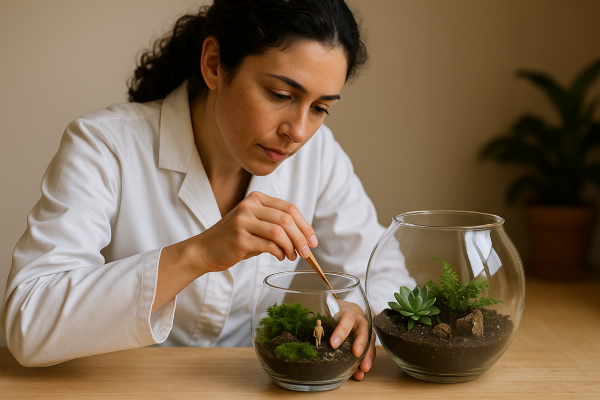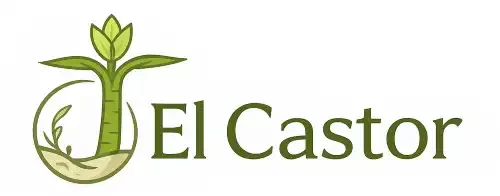How to decorate a terrarium involves much more than simply arranging a few rocks and calling it complete. Plant enthusiasts often ask this question because they want their miniature ecosystems to reflect their personal style while maintaining the delicate balance these living environments require.
Building a terrarium feels like crafting a tiny world where every decorative choice impacts both aesthetics and plant health. The decoration process becomes an art form that connects us to nature’s intricate design patterns.
How to decorate a terrarium?
Decorating a terrarium successfully involves selecting elements that enhance visual appeal while supporting the ecosystem’s health—combining natural materials like decorative rocks, crystals, and driftwood with carefully chosen colors and textures. The key lies in understanding that each decorative element serves both aesthetic and functional purposes within your miniature ecosystem.

Essential decorative elements for terrariums
The foundation of terrarium decoration starts with understanding which materials work harmoniously with your plants. Natural elements like seed pods, crystals, decorative rocks, and shells provide excellent decorative opportunities while remaining safe for the ecosystem.
Specialized terrarium rocks such as dragon stone (Ohko stone) and seiryu stone offer unique textures and striking visual contrast. Dragon stone features beautiful tan coloring and sedimentary structure that creates interesting shadows and depth. Seiryu stone brings dramatic blue-tinted surfaces with calcite veining that catches light beautifully.
Crystals and gemstones add sparkle and color to any terrarium design. Amethyst provides calming purple hues, while labradorite offers iridescent blues and greens that create depth and vibrancy. These materials remain stable in humid environments and won’t leach harmful substances into your ecosystem.
Creative layering and substrate decoration
Intentionally creating uneven soil layers can generate more visual interest than perfectly level substrates, creating valleys and hills that give your terrarium a dynamic, natural appearance. This technique mimics natural landscape formations and provides varied planting opportunities.
Decorative sand layers offer opportunities for color coordination and sand art techniques, while different colored gravels can create striking visual contrasts between substrate layers. Consider alternating colors in thin bands or creating gradual color transitions that complement your plant selections.
Advanced builders often incorporate LECA (lightweight expanded clay aggregate) not just for drainage but as a decorative element, as its natural tan color and uniform spherical shape creates clean, modern aesthetics.
Hardscape elements and structural decoration
Hardscape materials like decorative rocks and driftwood branches serve multiple purposes: building solid bases, creating depth perception, offering 3D planting opportunities, and providing pure decoration. These elements should be positioned after substrate placement but before planting to avoid disrupting the landscape.
Lava rock offers unique water retention properties due to its porous structure, making it both functional and visually interesting as it can support epiphytic plants and mosses directly on its surface. This creates living architectural elements within your terrarium.
Driftwood pieces add sculptural qualities and natural textures. These can serve as anchoring points for air plants in open terrariums or create natural-looking tree structures in closed systems.
Color schemes and thematic approaches
Successful terrarium decoration requires thoughtful color coordination. Spring-themed terrariums might incorporate pastel-colored stones and bright moss varieties, while desert themes work well with warm-toned rocks and colorful sand layers.
Seasonal decoration allows for creative flexibility—Halloween terrariums can feature miniature carved elements, while winter themes might incorporate white sand and crystalline structures. Remember that decorative elements should complement rather than compete with your plants for visual attention.
Consider the container’s style when choosing decorative themes. Geometric glass containers work well with modern, minimalist decoration approaches, while vintage apothecary jars suit more traditional or whimsical themes.
Miniature figurines and accessories
Small figurines, fairy garden accessories, and miniature architectural elements can transform terrariums into storytelling landscapes, but these elements must be waterproof and resistant to humidity.
Popular options include tiny mushrooms, miniature animals, small Buddha statues, or even action figures for whimsical themes. The key consideration is that plants will eventually grow and may obscure these decorative elements over time.
Miniature stepping stones create pathways through terrarium landscapes and can be arranged to guide the viewer’s eye through the composition. These work particularly well in larger containers where you have space for more elaborate scenes.
Container-specific decoration techniques
Different container shapes require adapted decoration approaches. Horizontal terrariums—containers laid on their sides—offer unique planting and decoration opportunities but require careful attention to soil placement and stability.
Hanging globe terrariums showcase decorative elements from all angles and work particularly well with air plants and minimalist decoration schemes. The spherical shape creates interesting light refraction effects with crystalline decorative elements.
Large containers like punch bowls or wide-mouth vessels allow for more elaborate decorative scenes, while smaller containers like mason jars require more restrained decoration approaches.
Avoiding common decoration mistakes
Never include materials that might decay, leach unwanted substances, or remain unclean in the terrarium environment. This eliminates organic materials like untreated wood, certain metals, or anything that might break down over time.
Avoid stones containing calcite in closed terrariums, as these can cause sediment buildup and water discoloration over time. Research any geological materials before incorporating them into your design.
Overcrowding represents another common error. Leave adequate space around plants for growth and ensure decorative elements don’t impede air circulation or light penetration.
Maintenance considerations for decorated terrariums
Plant growth will eventually alter your decorative arrangement, so design with long-term maintenance in mind. Position permanently decorative elements where plant growth won’t completely obscure them.
Regular cleaning of glass surfaces becomes more challenging with elaborate decorations, so consider accessibility when planning your design. Decorative elements should be removable if deep cleaning becomes necessary.
Monitor decorative materials for signs of algae growth or mineral deposits, particularly in high-humidity closed terrariums. Most natural materials can be gently cleaned with soft brushes if needed.
Conclusion
Last month, when I helped my neighbor design her first terrarium, watching her face light up as we arranged tiny crystals among her baby ferns reminded me why decorating these miniature worlds brings such joy. The careful placement of each decorative element—from the dragon stone that became her focal point to the subtle sand layers that tied everything together—transformed a simple plant container into a living work of art. This article represents the accumulated wisdom from countless hours spent perfecting these delicate ecosystems, and I hope it inspires you to create your own decorated terrarium masterpiece.
